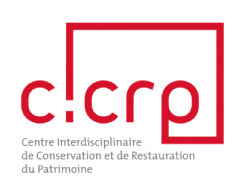Neoformation of sulphates as a factor in the deterioration of monuments: isotopic tracing (S, O, B) of internal and external pollution sources (‘BOS’ project)
Duration: 2002–2009
CICRP: Philippe Bromblet, Jean-Marc Vallet
Partnerships(s): Bureau of Geological and Mining Research (BRGM), Historic Monuments Research Laboratory (LRMH) and Olivier Rolland, restorer
This research programme, launched in 2002 on Bourges Cathedral, has subsequently benefited from financing for a duration of two years (2004–2006) under the National Research Project on the Conservation and Knowledge of Heritage (PNRCC) on the isotopic tracing of sulphate sources leading to the weathering of stone monuments.
The objectives were the following:
- to specify the origins of the soluble sulphates responsible for the degradation of the stones
- to identify and quantify the contributions of different sources identified, whether natural and internal to the stone (e.g. pyrite) or external (marine sprays), unintentional anthropogenic (urban atmospheric pollution) or intentional (plaster, Roman cement).
Different sites of investigation were selected for their environmental characteristics and their type of stone: the cathedrals of Bourges, Chartres and Marseille, and the châteaux of Chenonceau and of Versailles (garden).
The new aspect of the methodology concerns the use of a multi-isotopic ‘toolbox’ including the measurement of the isotopic signature of sulphur and oxygen constituting these solid sulphates (‘SO4’) and of the boron present in traces in the form of borates (‘BO3’). The isotopic analyses have been carried out on altered stone, mortar, plaster and black crust samples taken in different conditions from the different sites. The isotopic analyses have thus made it possible to shed light on the respective contributions of the sulphates originating from atmospheric pollution (classed under ‘black crust’) and from the materials (plaster, mortars). The use of isotopic dosages of sulphur and oxygen constitute a promising tool in determining the origins of sulphates associated with the degradation of stone.
Publications:
- Kloppmann W., Rolland O. and Bromblet Ph., ‘Isotope study (S,O) of sulphate neoformations involved in the degradation of stones on Bourges Cathedral (France): internal versus external salt sources’, Proceedings of the 10th International Congress on Deterioration and Conservation of Stone, Stockholm, Sweden, 2004, p. 595–602.
- Vallet J.-M., Gosselin C., Bromblet Ph., Rolland O., Vergès-Belmin V. and Kloppmann W., ‘Origin of salts in stone monument degradation using sulphur and oxygen isotopes: first results of the Bourges Cathedral (France)’, Journal of Geochemical Exploration, vol 88, 1–3, Jan–march 2006, GES-7, 7th International Symposium on the Geochemistry of the Earth’s Surface, 23–27 August 2005, Aix en Provence, p. 358–362.
- Kloppmann W., Vergès-Belmin V., Gosselin C., Rolland O., Bromblet Ph., Vallet J.-M. and Dotsika E., ‘Isotope (sulphur, oxygen, boron) tracing of internal or external origin of sulphates involved in the degradation of French monuments (BOS project)’, Proc. of the 7th European Conference ‘Sauveur’, Safeguarded Cultural Heritage, Understanding & Viability for the Enlarged Europe, 31st may – 3rd June 2006, Prague, Czech Republic, 2007, vol. 1, p.437–440.
- Kloppmann W., Vergès-Belmin V., Rolland O., Bromblet Ph., Vallet J.-M. and Gosselin C., ‘Néoformation de sulfates comme facteur de dégradation des pierres des monuments : détermination par traçage isotopique (B, O, S) des sources internes et externes du soufre’, Proceedings of the symposium Science des matériaux du patrimoine culturel, 6 and 7 December 2007, Paris, France, Techné, Special Issue, 2008, p.114–119.
- Kloppmann W., Bromblet Ph., Vallet J.-M., Vergès-Belmin V., Rolland O., Guerrot C. and Gosselin C., ‘Building materials as intrinsic sources of sulphate: A hidden face of salt weathering of historical monuments investigated through multi-isotope tracing (B, O, S)’, (2011) Sci Total Environ, 409, pp. 1658–1669.


